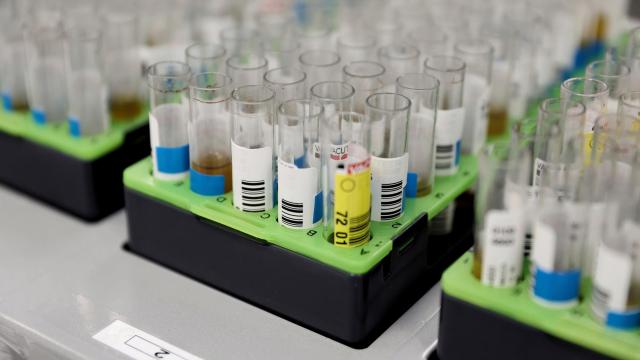Health officials continue to report more outbreaks of monkeypox in the U.S. and elsewhere, while a new analysis suggests that at least two different lineages of the viral illness are circulating around the U.S. These findings make it increasingly less likely that the virus can be stopped completely.
As of Friday afternoon, there have been 21 confirmed cases of monkeypox in the U.S., according to the Centres for Disease Control and Prevention. Worldwide, the number of confirmed and suspected cases is over 1,000 and climbing, with the most reported cases in the UK, Spain, and Portugal. And at least five cases have been found in New York City.
People sick with monkeypox develop flu-like illness and distinctive bumpy rashes that can form from head to toe. They’re contagious once symptoms appear, which can take one to two weeks following exposure, and remain so up until their rashes finally scab over and fall off, which can take a month. This long tail of exposure means that people reported sick today may have caught their infection weeks ago.
What we’re seeing now is especially alarming. Oftentimes, contract tracers aren’t finding any clear connection between reported cases, including recent travel to areas in Africa where monkeypox is endemic. And on Friday, CDC officials reported the preliminary results from a genetic analysis of virus samples taken from U.S. patients. While most of these cases were infected with monkeypox strains closely related to those now being found in Europe, they found, a few patients weren’t. Both strains were related to ones found in two people who contacted monkeypox last year in the U.S., however. These earlier cases were linked to travel in Nigeria, where the virus has been circulating since at least 2018.
All of this suggests that monkeypox has been spreading outside of Africa well before these outbreaks were noticed, at least occasionally. And by now, it’s likely spread well enough to spark many different chains of transmission that are going to be harder to stop. The virus is thought to be native to rodents, so it’s also possible that these outbreaks will spread back to animal hosts in these new areas of the world, which could allow the virus to establish a permanent foothold there.
The early evidence so far suggests that the virus hasn’t become substantially easier to transmit between humans in recent years, though it does seem to be spreading frequently through close contact during sex. Cases have been generally mild as well, though at least 10 people have died of monkeypox this year in Africa. And there are preventive vaccines and effective treatments available for it. So the worst-case scenario of a second concurrent deadly pandemic is probably still off the table. More likely is that monkeypox will become a regular problem in more parts of the world, routinely causing serious outbreaks.
Earlier this week, Hans Kluge, regional director of Europe at the World Health Organisation, warned that it may not be possible to contain monkeypox completely. If that chance does still exist, he added, it will take “a significant and urgent reduction in exposures through clear communication, community-led action, case isolation during the infectious period, and effective contact tracing and monitoring.”
